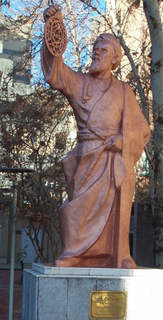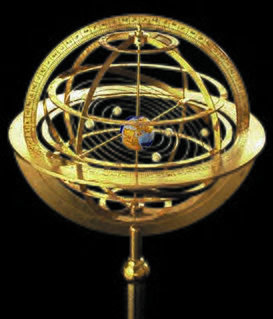 W
WAbū Ḥātim al-Muẓaffar al-Isfazārī was a Persian Muslim mathematician from Khurasan. According to Ibn al-Athir and Qutb al-Din al-Shirazi, he worked in the Seljuq observatory of Isfahan. Nezami Aruzi met him in Balkh in in 1112 or 1113.
 W
WAbū Muḥammad 'Abd al-Jabbār al-Kharaqī, also Al-Kharaqī was a Persian astronomer and mathematician of the 12th century, born in Kharaq near Merv. He was in the service of Sultan Sanjar at the Persian Court. Al-Kharaqī challenged the astronomical theory of Ptolemy in the Almagest, and established an alternative theory of the spheres, imagining huge material spheres in which the planets moved inside tubes.
 W
WMā Shā’ Allāh ibn Athari was an eighth-century Persian Jewish astrologer, astronomer, and mathematician. Originally from Khorasan he lived in Basra during the reigns of al-Manṣūr and al-Ma’mūn, and was among those who introduced astrology and astronomy to Baghdād in the late 8th and early 9th century. The bibliographer al-Nadim in his Fihrist, described him "as virtuous and in his time a leader in the science of jurisprudence, i.e. the science of judgments of the stars". He served as a court astrologer for the Abbasid caliphate, and wrote numerous works on astrology in Arabic. Some Latin translations survive.
 W
WAbd Ali ibn Muhammad ibn Husayn Birjandi was a prominent 16th-century Persian astronomer, mathematician and physicist who lived in Birjand.
 W
WAbu Rayhan al-Biruni was an Iranian scholar and polymath during the Islamic Golden Age. He has been variously called as the "founder of Indology", "Father of Comparative Religion", "Father of modern geodesy", and the first anthropologist.
 W
WAbū al-Wafāʾ, Muḥammad ibn Muḥammad ibn Yaḥyā ibn Ismāʿīl ibn al-ʿAbbās al-Būzjānī or Abū al-Wafā Būzhjānī was a Persian mathematician and astronomer who worked in Baghdad. He made important innovations in spherical trigonometry, and his work on arithmetics for businessmen contains the first instance of using negative numbers in a medieval Islamic text.
 W
WAbū al-ʿAbbās Aḥmad ibn Muḥammad ibn Kathīr al-Farghānī, also known as Alfraganus in the West, was an astronomer in the Abbasid court in Baghdad, and one of the most famous astronomers in the 9th century. Al-Farghani composed several works on astronomy and astronomical equipment that were widely distributed in Arabic and Latin and were influential to many scientists. His best known work, Kitāb fī Jawāmiʿ ʿIlm al-Nujūmi, was an extensive summary of Ptolemy's Almagest containing revised experimental data. Among those influenced by al-Farghani's works were Copernicus, who is said to have used al-Farghani’s calculation of the diameter of the Earth in his own calculations, and Christopher Columbus, who used the same calculation for his voyages to America. In addition to making substantial contributions to astronomy, al-Farghani also worked as an engineer, supervising construction projects on rivers in Cairo, Egypt. The lunar crater Alfraganus is named after him.
 W
WKamal al-Din Hasan ibn Ali ibn Hasan al-Farisi or Abu Hasan Muhammad ibn Hasan ) was a Persian Muslim scientist. He made two major contributions to science, one on optics, the other on number theory. Farisi was a pupil of the astronomer and mathematician Qutb al-Din al-Shirazi, who in turn was a pupil of Nasir al-Din Tusi.
 W
WAbū Bakr Muḥammad ibn al Ḥasan al-Karajī was a 10th-century Persian mathematician and engineer who flourished at Baghdad. He was born in Karaj, a city near Tehran. His three principal surviving works are mathematical: Al-Badi' fi'l-hisab, Al-Fakhri fi'l-jabr wa'l-muqabala, and Al-Kafi fi'l-hisab.
 W
WGhiyāth al-Dīn Jamshīd Masʿūd al-Kāshī was a Persian astronomer and mathematician during the reign of Tamerlane.
 W
WOmar Khayyam was a Persian mathematician, astronomer, philosopher, and poet. He was born in Nishabur, in northeastern Iran, and spent most of his life near the court of the Karakhanid and Seljuq rulers in the period which witnessed the First Crusade.
 W
WAbu Mo’in Hamid ad-Din Nasir ibn Khusraw al-Qubadiani or Nāsir Khusraw Qubādiyānī Balkhi also spelled as Nasir Khusrow and Naser Khosrow was a Persian poet, philosopher, Isma'ili scholar, traveler and one of the greatest writers in Persian literature. He was born in Qabodiyon, a village in Bactria in the ancient Greater Iranian province of Khorasan, now in modern Tajikistan and died in Yamagan, now Afghanistan.
 W
WMuḥammad ibn Mūsā al-Khwārizmī, Arabized as al-Khwarizmi and formerly Latinized as Algorithmi, was a Persian polymath who produced vastly influential works in mathematics, astronomy, and geography. Around 820 CE he was appointed as the astronomer and head of the library of the House of Wisdom in Baghdad.
 W
WThe Banū Mūsā brothers, namely Abū Jaʿfar, Muḥammad ibn Mūsā ibn Shākir ; Abū al‐Qāsim, Aḥmad ibn Mūsā ibn Shākir ; and Al-Ḥasan ibn Mūsā ibn Shākir, were three ninth-century Persian scholars who lived and worked in Baghdad. They are known for their Book of Ingenious Devices on automata and mechanical devices. Another important work of theirs is the Book on the Measurement of Plane and Spherical Figures, a foundational work on geometry that was frequently quoted by both Islamic and European mathematicians.
 W
WAbū Sahl Wayjan ibn Rustam al-Qūhī was a Persian mathematician, physicist and astronomer. He was from Kuh, an area in Tabaristan, Amol, and flourished in Baghdad in the 10th century. He is considered one of the greatest Muslim geometers, with many mathematical and astronomical writings ascribed to him.
 W
WAla al-Dīn Ali ibn Muhammed, known as Ali Qushji was a Timurid theologian, jurist, astronomer, mathematician and physicist, who settled in the Ottoman Empire some time before 1472. As a disciple of Ulugh Beg, he is best known for the development of astronomical physics independent from natural philosophy, and for providing empirical evidence for the Earth's rotation in his treatise, Concerning the Supposed Dependence of Astronomy upon Philosophy. In addition to his contributions to Ulugh Beg's famous work Zij-i-Sultani and to the founding of Sahn-ı Seman Medrese, one of the first centers for the study of various traditional Islamic sciences in the Ottoman caliphate, Ali Kuşçu was also the author of several scientific works and textbooks on astronomy.
 W
WIbn Sahl was a Persian mathematician and physicist of the Islamic Golden Age, associated with the Buwayhid court of Baghdad. Nothing in his name allows us to glimpse his country of origin.
 W
WQotb al-Din Mahmoud b. Zia al-Din Mas'ud b. Mosleh Shirazi (1236–1311) was a 13th-century Iranian polymath and poet who made contributions to astronomy, mathematics, medicine, physics, music theory, philosophy and Sufism.
 W
WAbu Sa'id Ahmed ibn Mohammed ibn Abd al-Jalil al-Sijzi was an Iranian Muslim astronomer, mathematician, and astrologer. He is notable for his correspondence with al-Biruni and for proposing that the Earth rotates around its axis in the 10th century.
 W
WMuhammad ibn Muhammad ibn al-Hasan al-Tūsī, better known as Nasir al-Din al-Tusi, was a Persian polymath, architect, philosopher, physician, scientist, and theologian. Nasir al-Din al-Tusi was a well published author, writing on subjects of math, engineering, prose, and mysticism. Additionally, al-Tusi made several scientific advancements. In astronomy, al-Tusi created very accurate tables of planetary motion, an updated planetary model, and critiques of Ptolemaic astronomy. He also made strides in logic, mathematics but especially trigonometry, biology, and chemistry. Nasir al-Din al-Tusi left behind a great legacy as well. Some consider Tusi one of the greatest scientists of medieval Islam, since he is often considered the creator of trigonometry as a mathematical discipline in its own right. The Muslim scholar Ibn Khaldun (1332–1406) considered Tusi to be the greatest of the later Persian scholars. There is also reason to believe that he may have influenced Copernican heliocentrism.